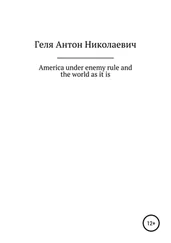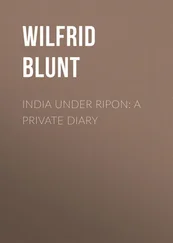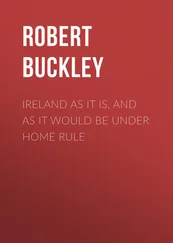British territory and fortress at Madras, 1639.
§3. In 1639 a British merchant named Day bought a strip of territory on the Coromandel coast, about 300 miles to the south of Masulipatam. It was within the dominions of a Hindu Raja, and was about six miles long and one mile inland. It included a small island, which faced the sea and was defended on the land side by a river. Mr. Day agreed to pay the Raja a rent of 500 l. a year in native coin known as pagodas, and the transaction was duly engraved on a plate of gold. A factory of brick was built upon the island, and mounted with cannon, and called Fort St. George. The Raja was perfectly content. He was too glad to get a rent of 500 l. a year to raise any difficulty as regards fortifications or cannon.
Fort St. George and Black Town.
This factory was the germ of the city of Madras, on the coast of Coromandel. Weavers, washers, painters, and hosts of other Hindu artisans, flocked to the spot and eagerly entered the service of the British, and began to set up their looms and to weave, wash, and paint their cotton goods in the open air beneath the trees. Villages of little huts of mud and bamboo soon grew up on the sandy soil to the north of the island and factory. Each avocation formed a caste, which generally had its own quarters and its own headman. In this manner a Hindu settlement grew up by the side of Fort St. George and was known as Black Town; and the whole locality, including Fort St. George and Black Town, was called Madras, and was the first territory acquired by the East India Company in India.
Despotic rule.
The transition of the British traders from a factory under Mohammedan control to an independent settlement of their own must have been a grateful change. The President and Council at Fort St. George were de facto rulers of the whole settlement, native as well as European, with all the powers of despotic princes and with no interference from without. They acted as a supreme court of judicature for Englishmen in all cases civil and criminal; no Englishman, however, could be condemned to death unless convicted of piracy, which was regarded as the most heinous of crimes. On all other capital charges the Englishman was sent to England for trial. 2 2 The authorities for the present chapter, which deals with the rise and early development of British rule in India, are somewhat numerous. The most important are the Government records at Madras, in which the weekly transactions of the Governor and Council are entered at full length in a series known as "Consultations." Every year a copy of the "Consultations" was sent to the Court of Directors, together with a summary of the affairs of the year as a "General Letter;" and every year a "General Letter" was received from the Court of Directors, reviewing the "Consultations," and conveying instructions and orders thereon. The Madras records have been closely investigated by the author from 1670 to 1748; and printed extracts were published at Madras in 1860-62, in three volumes small quarto, under the title of Madras in the Olden Time . To them may be added Bruce's Annals of the East India Company ; Sir Thomas Roe's Journal of a Mission to the Great Mogul in 1616-18; and the travels of Pietro della Valle, Tavernier, Thevenot and Fryer; as well as Orme's History of Hindustan , Stewart's History of Bengal , Faria y Souza's History of Portuguese Asia , and Shaw's Predecessors of the High Court at Madras . Further authorities will be found cited in the author's History of India from the Earliest Ages , and in his Early Records of British India .
Portuguese and Dutch neighbours.
Four miles to the south of Fort St. George was the Portuguese town of St. Thomé; but the Portuguese were now friends with the English. Their power was being overshadowed by that of the Dutch, who had founded a town and fortress at Pulicat, nearly thirty miles to the northward of Fort St. George.
Dutch trade in India.
The Dutch settlements in India were the outcome of the hostility of Spain. For centuries the Dutch had been the carriers of Europe, from the Mediterranean to the Baltic. In the period which preceded the sixteenth century they had bought Indian commodities at Genoa, Naples and Venice. After the Portuguese established a trade in India, the Dutch went every year to Lisbon to buy Indian commodities for the European markets. In 1580 they threw off the yoke of Spain, and founded the United Provinces. That same year Spain and Portugal were formed into one kingdom under Philip II. In an evil hour for Portuguese interests in India, Philip thought to punish the Dutch by shutting them out of Lisbon. The Dutch revenged themselves by sailing round the Cape and buying what they wanted in the islands of the Eastern Archipelago. In 1600 they built a factory in Java, which grew into the city of Batavia. In 1610 they built a square fort on the Pulicat Lake, which grew into the town of Pulicat and threatened to become the capital of Dutch ascendency in India.
Right and Left Hands.
The Indian quarter at Madras was almost entirely Hindu. Scarcely a Mohammedan took up his abode within the Company's bounds. Accordingly one of the earliest acts of the President and Council was to divide the streets of Black Town into those of the right and left hand. All over Southern India, the lower castes of Hindus are divided into Right and Left Hands, and yet no one can account for the distinction, or satisfactorily define the respective rights of each Hand.
The so-called Hands are, however, intensely jealous of each other. For generations each Hand in the towns of Southern India has had its own streets and its own pagoda. At Madras, if one Hand passed in religious procession along the streets of the other Hand, or if the members of one Hand chanted Hindu hymns or mantras before the pagoda of the other, a fray would break out in Black Town, which could only be suppressed by British soldiers, and then would be followed by a strike of weavers or painters, or the flight of all the members of one Hand to the Portuguese settlement at St. Thomé. These conflicts, which more than once brought the settlement to the brink of ruin, reached a climax in Governor Pitt's time, as will appear hereafter.
Mohammedan invasion.
Meanwhile, the country round about Madras was in a state of turmoil. The Mohammedan army of the Sultan of Golconda was advancing against the Hindu Rajas of the south, and formed a camp in the neighbourhood. The Raja who had sold the territory to the East India Company fled away to the interior, and was never heard of more. The Mohammedan army captured the Portuguese town of St. Thomé, dismantled the walls of the fortress, and carried off the cannon to Golconda; and they would have treated Fort St. George in like fashion, had not the British stoutly resisted, and quieted the Sultan by engaging to pay him the rent which they had previously paid to the Raja.
Troubles with Dutch and French, 1670.
About 1670, or some thirty years after the foundation of Madras, the state of affairs was complicated by Charles II.'s unholy alliance with France against the Dutch. A French fleet attacked St. Thomé and drove out the Mohammedans. A Dutch fleet from Pulicat recaptured St. Thomé, drove out the French, and restored the place to the Sultan of Golconda. The British settlement was in sore peril; but in 1674 there was peace between Great Britain and Holland, and the danger was over.
Increase of population.
These troubles brought many strangers to Madras, and the population, white and black, was largely increased. Many Portuguese families from St. Thomé took refuge in Madras, and added to the strength of the European settlement, known as White Town, by building houses under the protection of the factory guns. The British factors and soldiers of the garrison married the daughters of the Portuguese, much to the horror of the English chaplain of Fort St. George, as the marriages were accompanied by numerous conversions of bridegrooms to the Catholic faith. At the same time wealthy Hindu traders and bankers began to build substantial houses in Black Town for the sake of British protection. Many invested their money in trading voyages; some acted as brokers or banyans for the supply of Indian commodities to the Company's servants; others bought European goods at the public auctions, and supplied the native dealers up country.
Читать дальше












